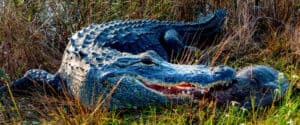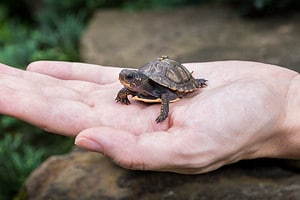North America’s most common turtle is the Painted turtle, Also known as Chrysemys picta. It lives in slow-moving freshwater from northern Mexico to southern Canada and the Pacific to the Atlantic. They prefer large wetlands with extended periods of inundation and emerging vegetation.
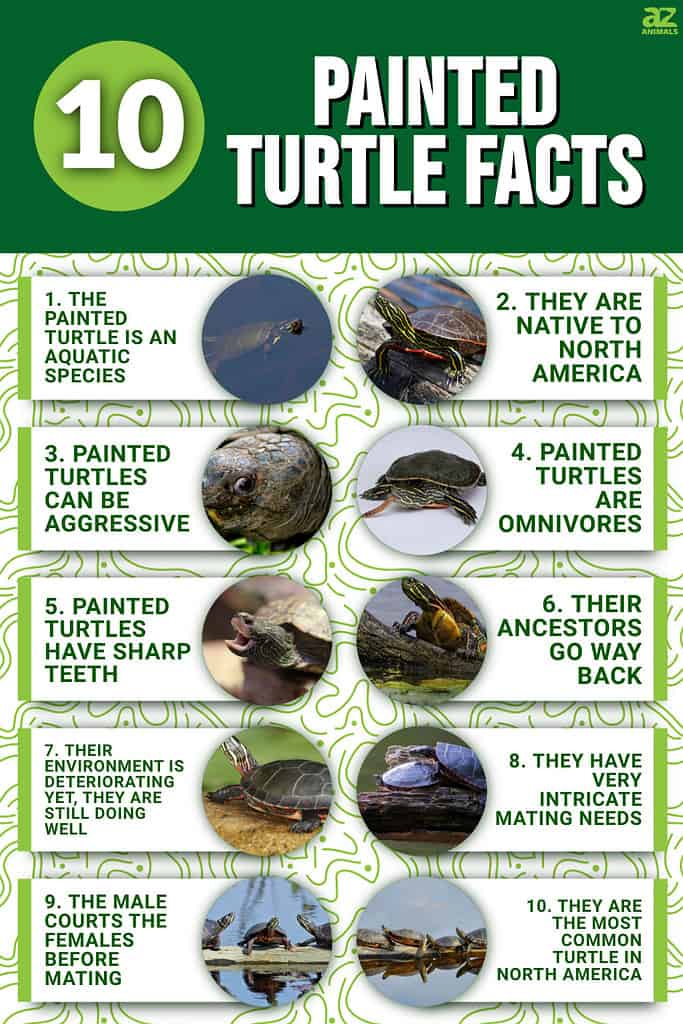
Chrysemys is a pond turtle of the Emydidae family. Fossils date the painted turtle back 15 million years. Three subspecies (eastern, midland, and western) formed in the last ice age. Chrysemys’ only other species, or subspecies, is the southern painted turtle, or C. dorsalis. Want to learn more? Here are 10 incredible painted turtle facts!
1. The Painted Turtle is an Aquatic Turtle Species
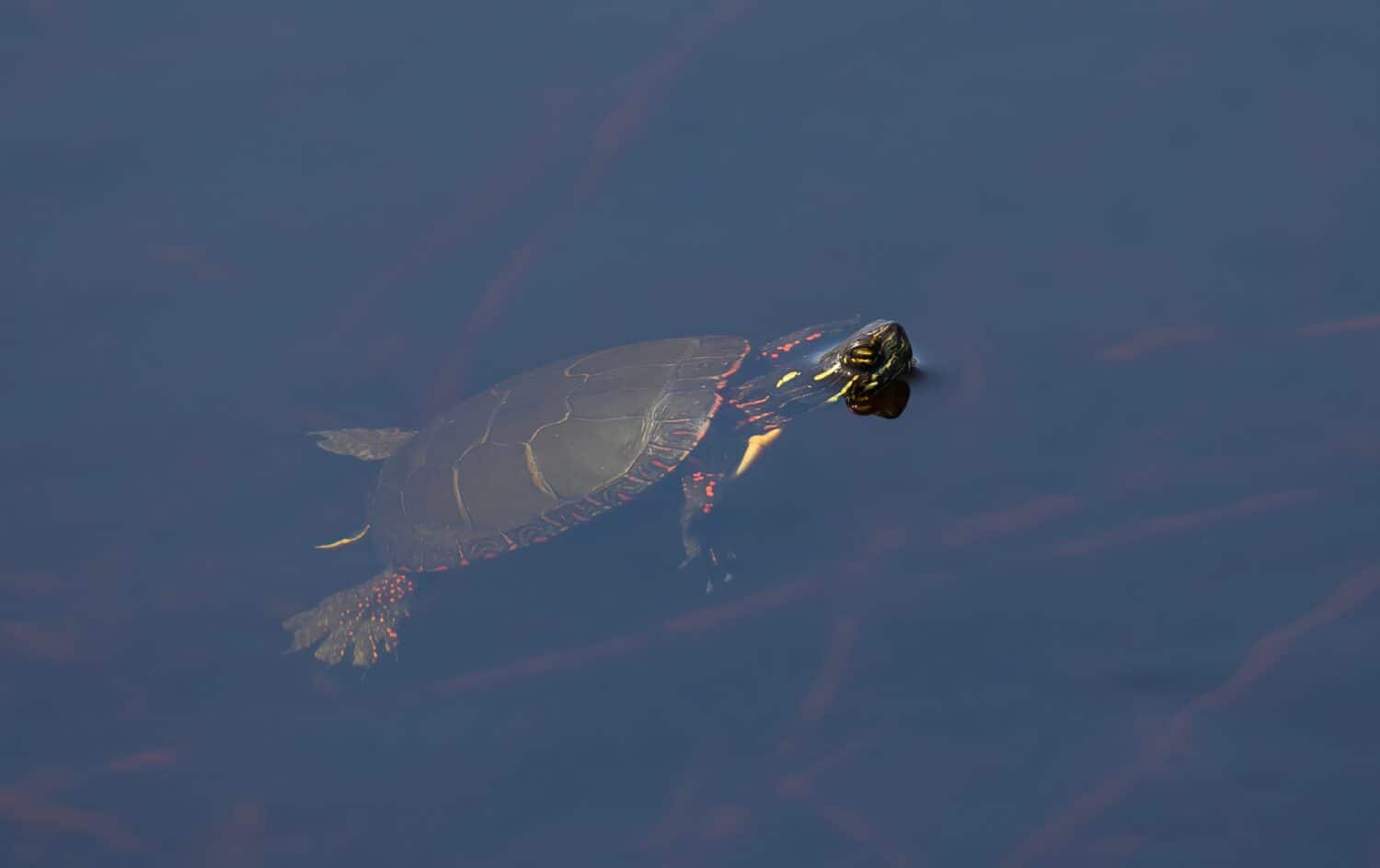
Due to their aquatic lifestyle, painted turtles spend little time on land besides swimming, feeding, and sunbathing.
Image: Jim Cumming, Shutterstock
©Jim Cumming/Shutterstock.com
They are typically located near or on calm bodies of water. All four subspecies of painted turtles are endemic to North America. However, they differ in appearance and behavior based on where on the continent they are found. Because of their aquatic lifestyle, painted turtles spend little time on land besides swimming, feeding, and sunbathing.
2. They Are Native to North America
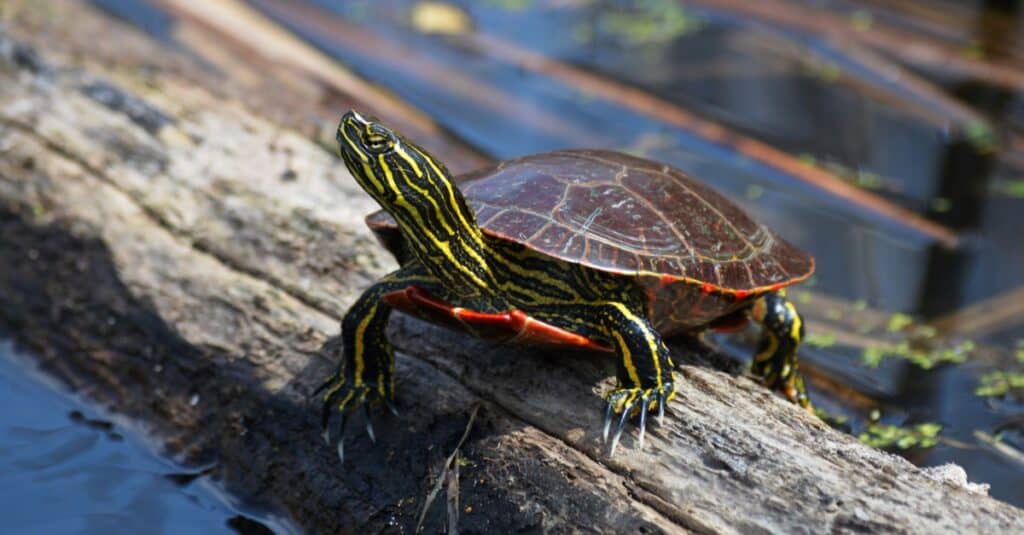
Four subspecies of painted turtles have developed according to their geographic range.
©KARI K/Shutterstock.com
The Painted turtle has gained widespread recognition as a native species of North America. The Chrysemys pond turtle is the only member of the genus Chrysemys, which is classified in the subfamily Emydidae. Over time, four distinct subspecies of painted turtles have developed according to their geographic range: the Eastern-painted turtle, the Southern-painted turtle, the Midland-painted turtle, and the Western-painted turtle.
3. Painted Turtles Can Be Aggressive
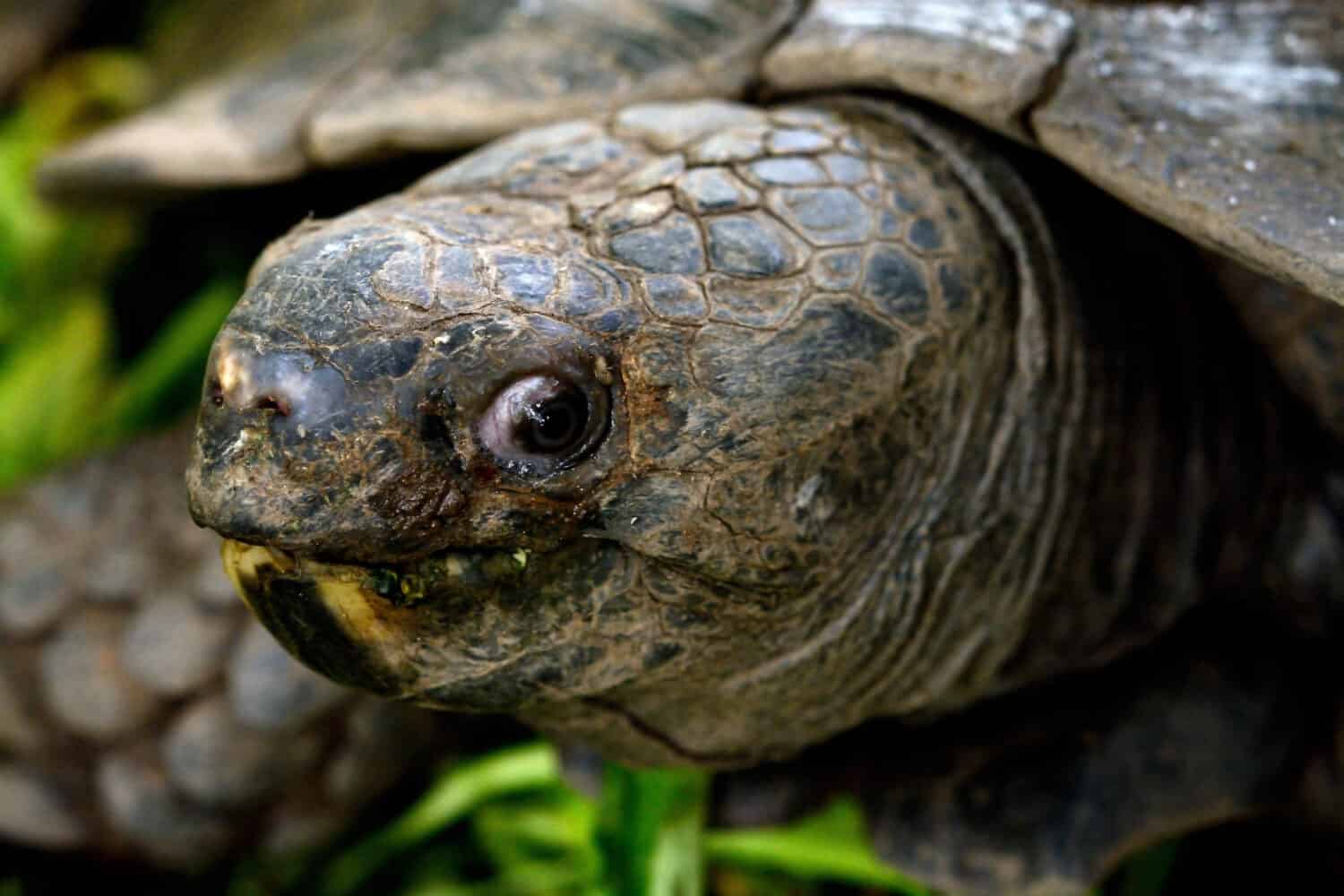
Male turtles are more likely to become aggressive than females, especially if their territory feels threatened.
mage: Johnstocker Production, Shutterstock
©Johnstocker Production/Shutterstock.com
Both males and females are indeed capable of aggressive territorial or dominant behavior. Still, if there’s plenty of space and hiding spots, it’s rare for this behavior to escalate into severe damage. Males frequently and aggressively harass females to the point of physical violence, and males are more likely to be aggressive and territorial than females.
4. Painted Turtles Are Omnivores
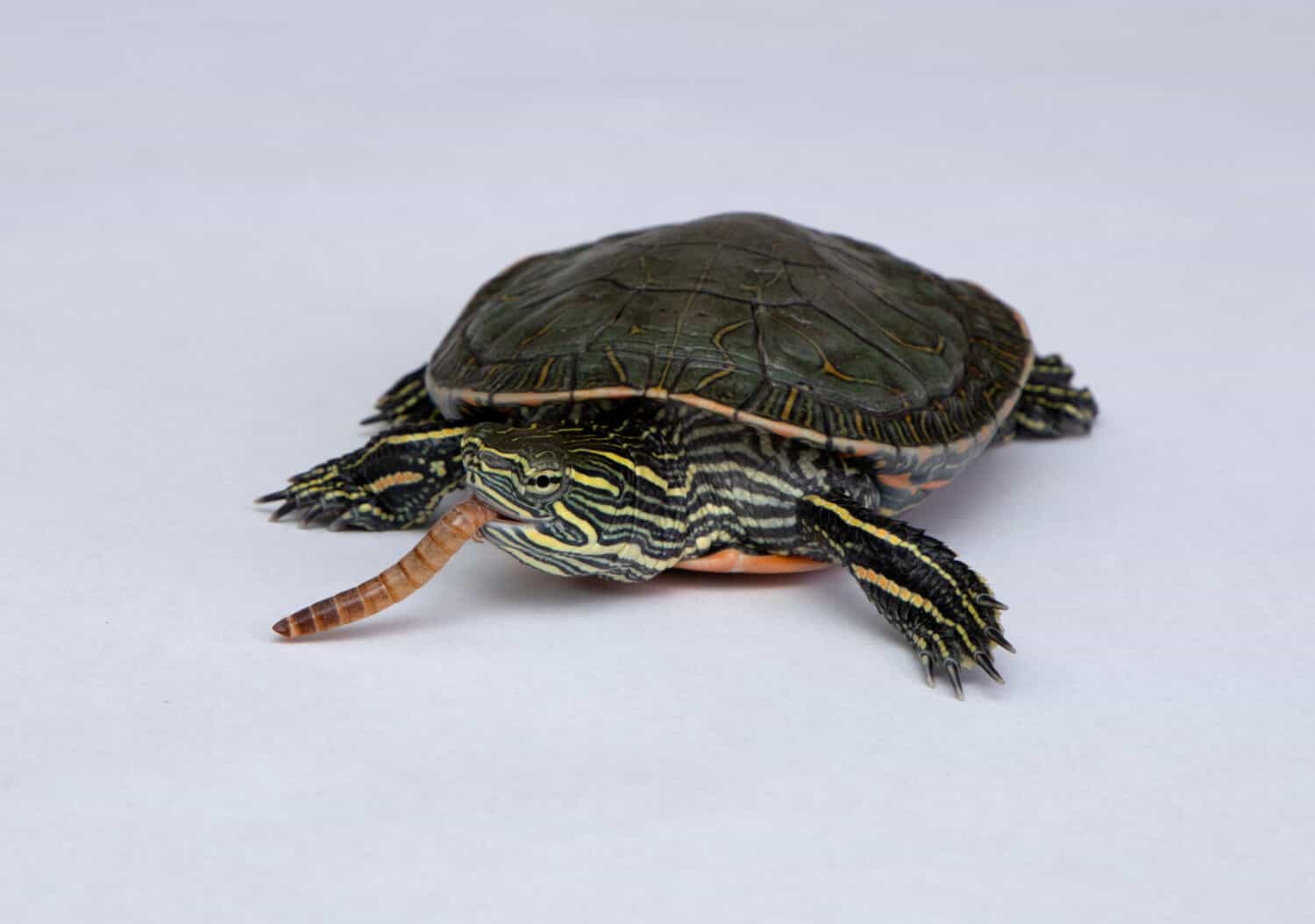
Painted turtles eat worms and other small fish and insects as well as plants.
Image: Cat Hammond, Shutterstock
©Cat Hammond/Shutterstock.com
Painted turtles get their nutrition primarily from vegetation but sometimes from small animals like crabs, fish, water insects, and even the occasional bit of carrion. At an early age, painted turtles mostly feed on meat, but their diet shifts to include more plant matter as they mature. In terms of diet, painted turtles are omnivores with a wide range of food preferences. Adult turtles should be fed at least once every 2 – 3 days. The painted turtle is an example of an omnivore or an animal that consumes meat and plants.
5. Painted Turtles Have Sharp Teeth
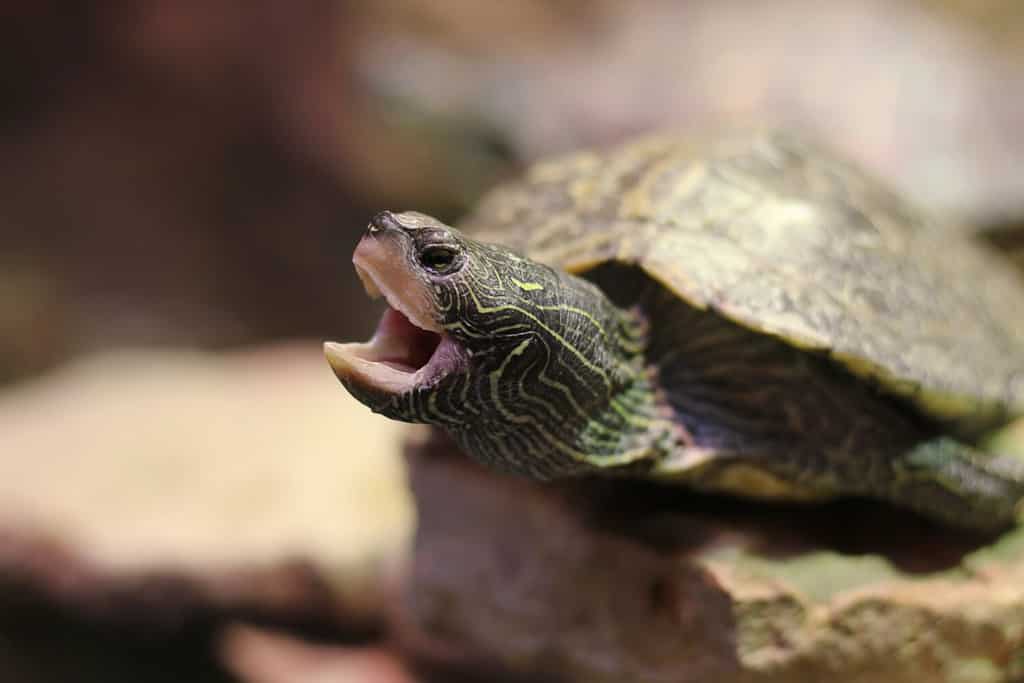
Never attempt to feed a wild-painted turtle.
©Busiukas/Shutterstock.com
It is common knowledge that painted turtles bite. Despite the strength of the jaws and mandibles, even an adult cannot do much damage because of their diminutive size. Please don’t ever feed a wild turtle; extra care must be used whenever a pet turtle is being handled or fed.
6. Their Ancestors Go Way Back
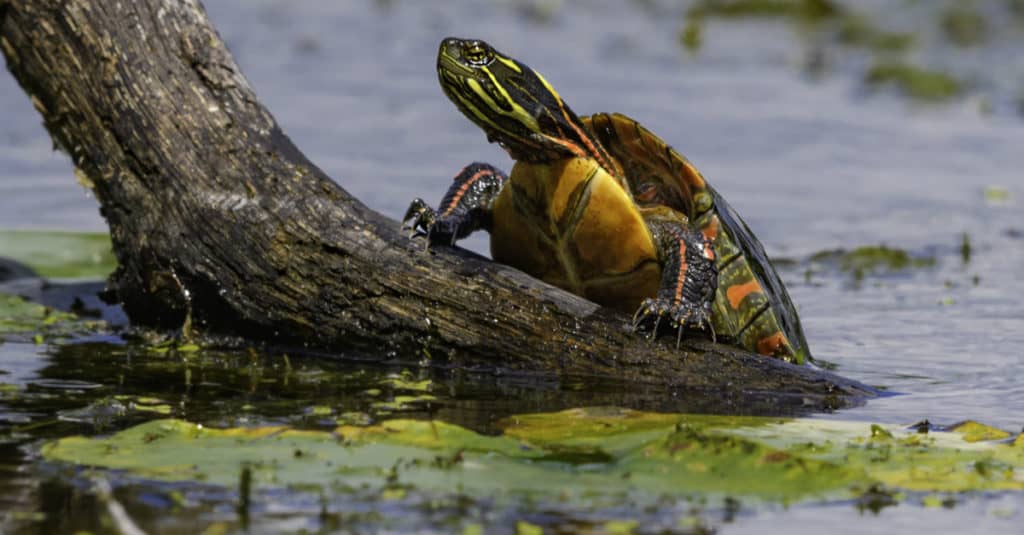
Fossils date the painted turtle back 15 million years.
©FotoRequest/Shutterstock.com
The earliest evidence of painted turtles dates back 15 million years when remains of this species were discovered. During the last glacial period, there was the evolution of three distinct subspecies, each in the Eastern United States, the Middle United States, and Western North America. Eastern, Midwestern, Southern, and Western subspecies have all been identified thus far.
7. Their Environment is Deteriorating Yet, They Are Still Doing Well
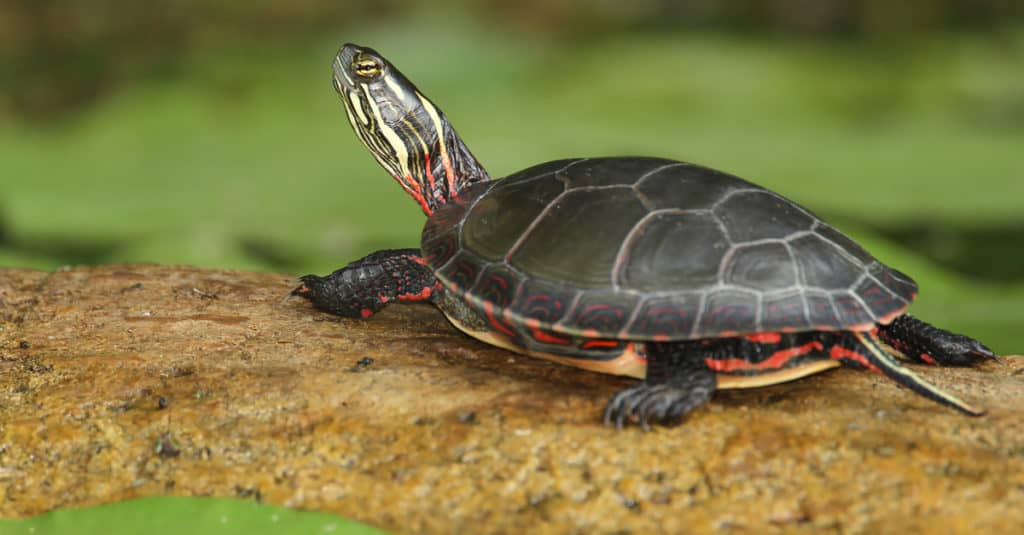
Painted turtles are of the least concern for extinction, according to the IUCN.
©Brian Lasenby/Shutterstock.com
The IUCN lists it as “Least Concern” for extinction. When young, painted turtles are especially vulnerable to animal predation, including raccoons, red foxes, birds, plain garter snakes, and water scorpions.
Human interference, vehicle mortality, and shrinking habitat contribute to a steep decline in the local population. Because of environmental shifts, water sources are drying up, and basking areas are diminishing. These things attract more predators and make it simpler for them to catch their prey.
8. They Have Very Intricate Mating Needs
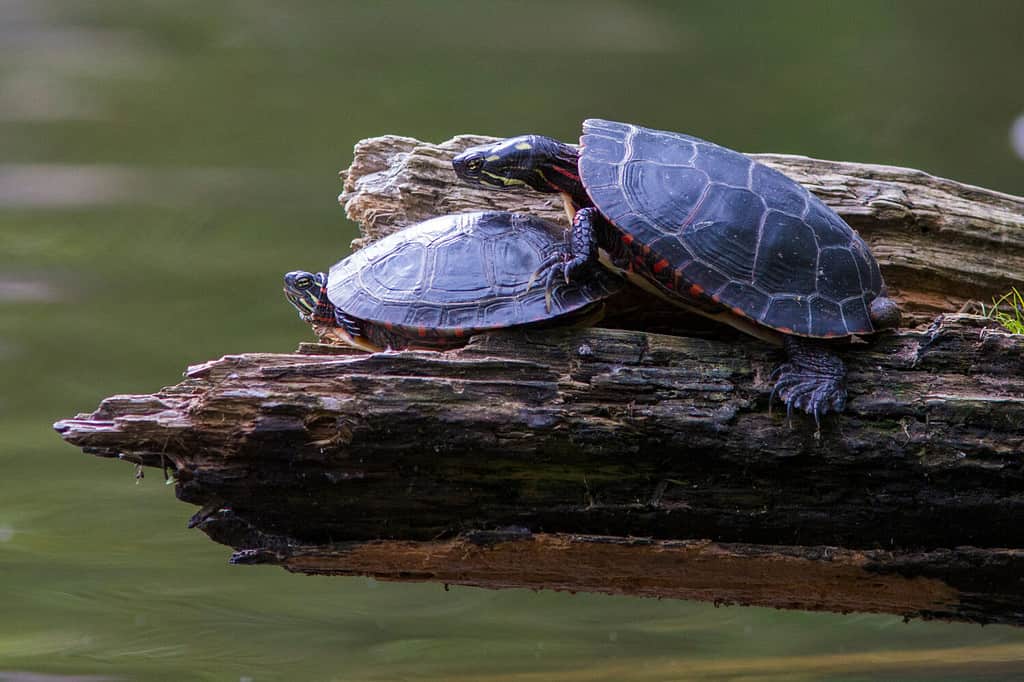
Male painted turtles sunbathe to keep their body temperature at 63 °F during the first spring.
©Mircea Costina/Shutterstock.com
Painted turtles begin their breeding season when the water temperature is between 50 to 77 °F in the spring and fall. Males sunbathe to keep their body temperature at 63 °F during the first spring when females start their reproductive cycle and ovulate.
9. The Male Courts the Females before Mating
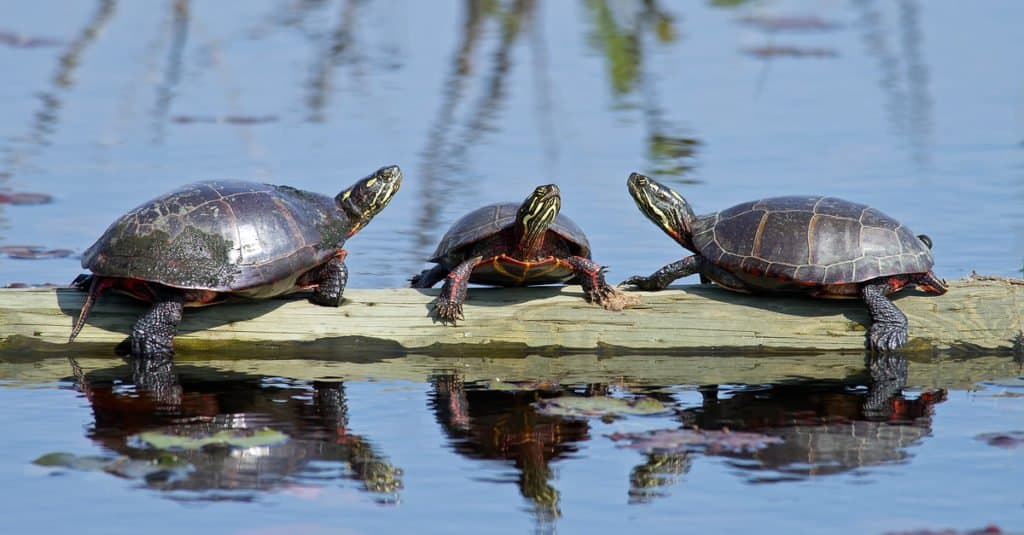
Painted turtles build their nests far away from the body of water to ensure the safety of the eggs they hatch.
©Brian E Kushner/Shutterstock.com
To mate, male turtles must track down and confront their prospective mates. The male then makes a courting gesture by tapping the woman on the face, which the woman returns. After mating at the water’s base, painted turtles build their nests far away from the body of water to ensure the safety of the eggs they hatch.
10. They Are the Most Common Turtle in North America
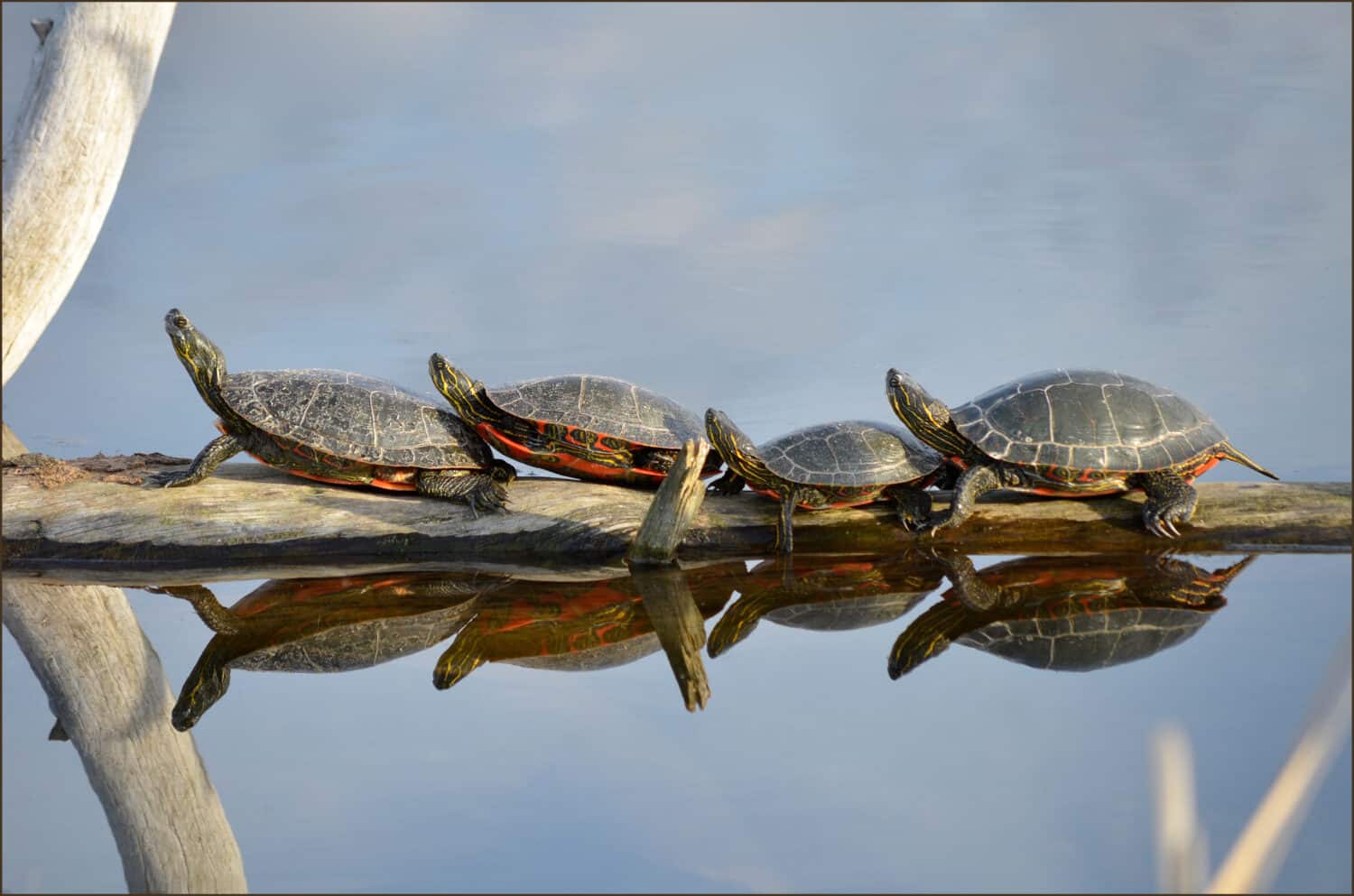
Painted turtles choose bodies of water that provide ample space for lounging in the sun and an abundance of aquatic vegetation to feast upon.
Image: Dennis Diehl, Shutterstock
©Dennis Diehl/Shutterstock.com
You can find painted turtles all over North America, from Northern Mexico to Canada, much like you would a regular snapping turtle. A painted turtle’s natural environment is described here.
To avoid slipping and falling, painted turtles prefer bodies of water in freshwater with smooth bottoms. Therefore, they choose bodies of water like ponds, lakes, marshes, and creeks, which provide slow-moving water, ample space for lounging in the sun, and an abundance of aquatic vegetation to feast upon. However, distinct species of it have evolved in response to different environments.
The photo featured at the top of this post is © Joseph M. Arseneau/Shutterstock.com
Sources
- Wikipedia, Available here: https://en.wikipedia.org/wiki/Painted_turtle
- Animalia, Available here: https://animalia.bio/painted-turtle
- Marshall Edu, Available here: https://www.marshall.edu/herp/Turtles/Painted_Turtle.htm
Thank you for reading! Have some feedback for us? Contact the AZ Animals editorial team.



